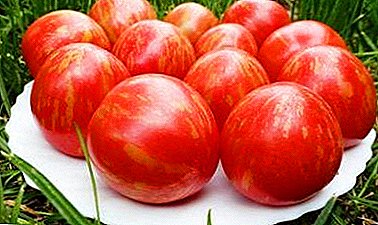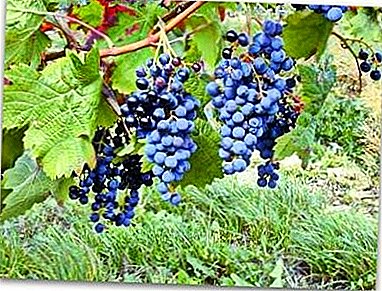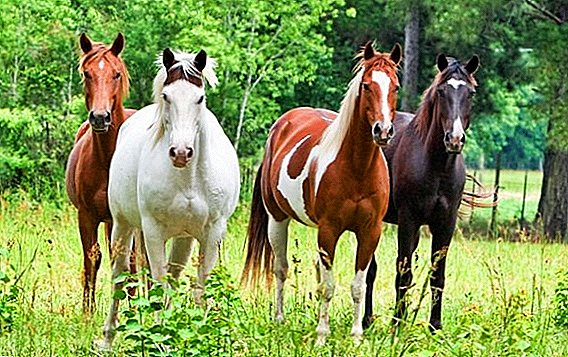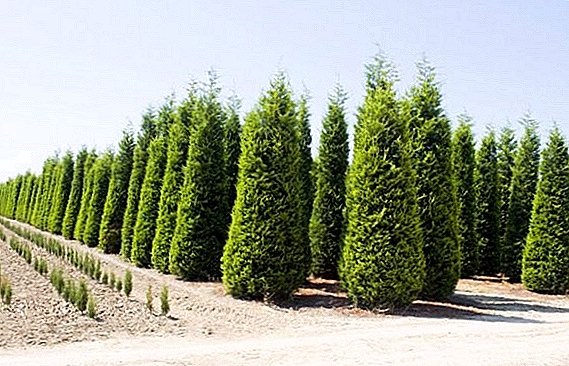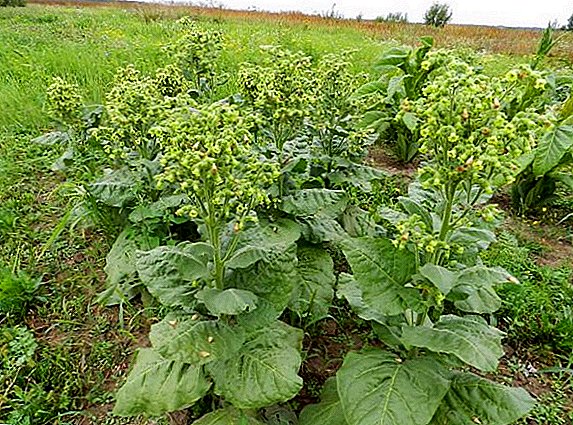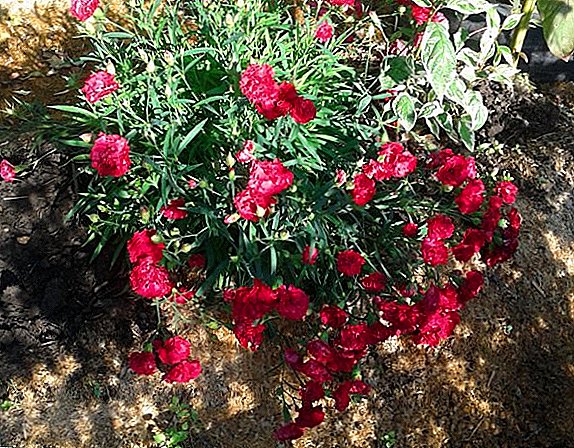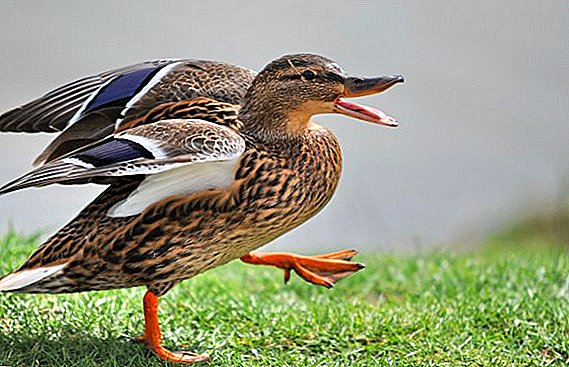 When planning to bring a bird to the farmstead, many long before the purchase they calculate various options, and often the most attractive of them is breeding ducks. Indeed, they grow quickly and have an enviable appetite. Another obvious advantage of such pets is their attitude to food: it is believed that they eat almost everything. Let us find out if this is so in fact and what kind of feed guarantee a stable weight gain of the bird.
When planning to bring a bird to the farmstead, many long before the purchase they calculate various options, and often the most attractive of them is breeding ducks. Indeed, they grow quickly and have an enviable appetite. Another obvious advantage of such pets is their attitude to food: it is believed that they eat almost everything. Let us find out if this is so in fact and what kind of feed guarantee a stable weight gain of the bird.
How to feed the ducks at home
With all the unpretentiousness of these birds, their owners still need to know what to feed the feathered farm. Consider the main types of feed.
Cereal feed
This is the basis of the diet. Whole and crushed grains are the main source of calories, vitamins and minerals (especially there are a lot of carbohydrates needed to maintain activity). Moreover, the use of cereals contributes to the growth of poultry and rapid mass gain.
Consider all the details of the content of duck breeds such as Peking, Star-53, Gogol, Indo-Musk, Mulard, Mandarin Duck, Blue Favorite and Bashkir.
The favorite cereals of ducks are:
- Corn. It is perfectly acquired, is in the lead on energy value. In priority - yellow varieties (they have more carotene). Depending on the age of the bird, these grains make up 40-50% of the total food volume.

- Feed wheat. In terms of protein, it is more profitable than corn (14% versus 10%), but somewhat inferior to it in its energy value. Contains vitamins B and E. Maximum dose - 1/3 of the total weight of the feed. Many people do not use the grains themselves, but coarse flour mixed with wet "talkers". This is also allowed.
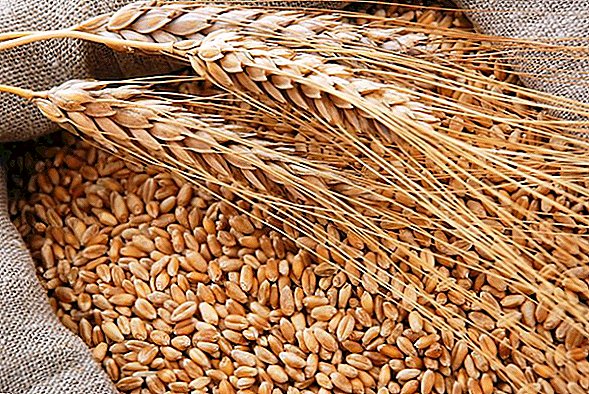
- Barley. Half the grain mass is carbohydrates, so its share in the daily diet usually reaches 1/3. True, because of the hard shell ducklings are given barley, ground into small pieces of dust, and always with a screened shell (otherwise the product is not digested).

- Oats. The absence of a number of essential amino acids is compensated by a high (10-15%) protein content. It is best to take peeled grains or bare varieties.
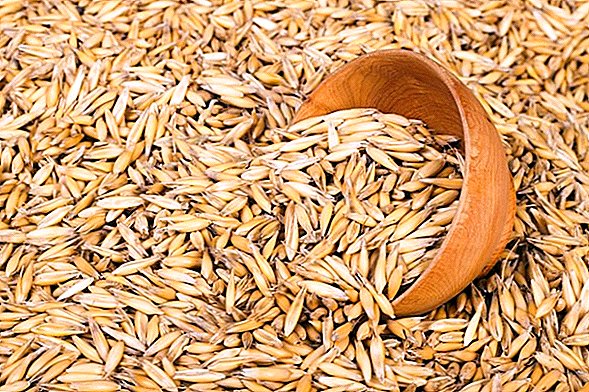
- Peas. High-protein feed, which is given in ground form. But because of the specific smell and taste, it is fed in small doses (maximum 12% of the total grain-flour ration). The same applies to lentils.

Important! Before using such a raw material, inspect it for the absence of mold, darkening or traces of rodent activity.
Do not forget about the products of processing in the form of bran. This mixture of flour, germ and cereal shells contains up to 12% protein. But due to the high concentration of cellulose bran, no more than 20% is given to bran in the diet of dry feed.
Succulent feed
Experienced owners know that such delicacies are especially loved by ducks. Go to a similar food in the summer. During this period, try to provide the bird with such feed:
- Lemna, elodey, rdest. Aquatic vegetation has a rich set of vitamins and trace elements. Ideally, the bird should have access to the reservoir, but this is not always possible, therefore, many harvested duckweed. Reception - from 15 g per day for young animals to 0.5 kg for adult ducks.
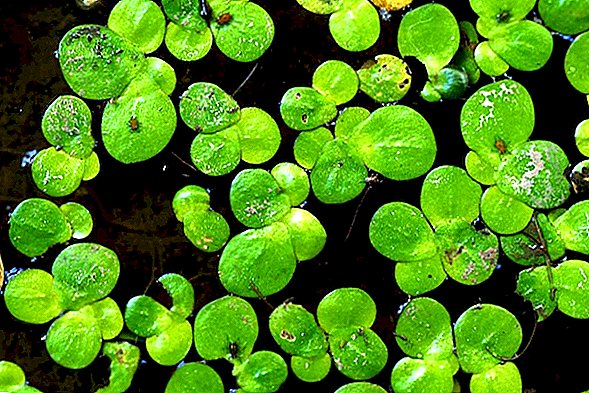
- Green mass. Usually it is a mixture of chopped clover, pea tops, alfalfa and young nettle (it is first boiled over with boiling water). The absence of 1-2 components does not play a special role. Such greens are added to wet grain mixtures, making sure that the share of such a delicacy is within 15-20% of the total diet.
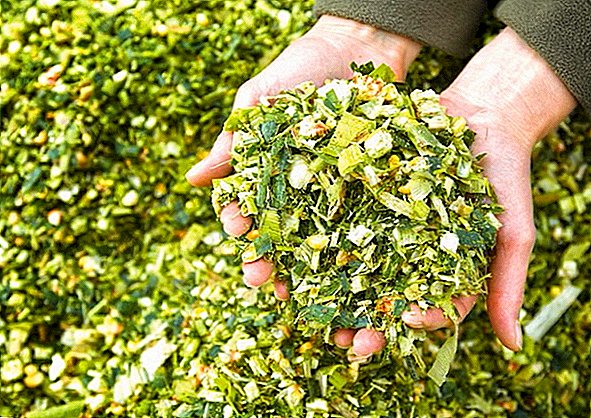
- Vegetables after processing. Feed cabbage, grated yellow pumpkin or carrots provide ducks with plenty of vitamins. With regard to the presence in the food, the volumes of cabbage are not limited, while salty carrots and pumpkin hold within 10-15% of the daily weight. From 10 days of age, ducklings can be given boiled potatoes or finely chopped boiled sugar beets: 15-20% of this product can replace one fifth of the daily intake of dry food.
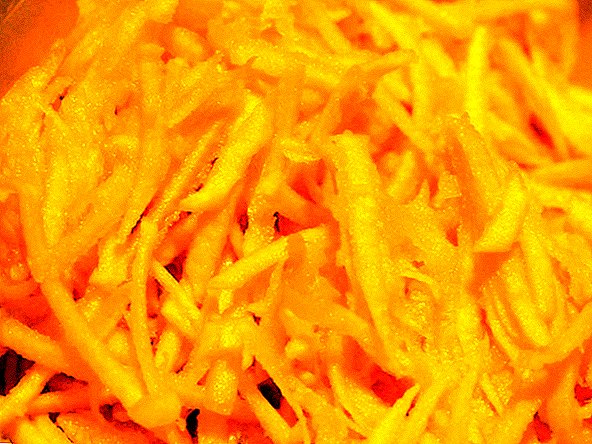
Did you know? A duck has a greater number of cervical vertebrae than a giraffe.Of juicy billets often make silage. The collected clover or alfalfa is mixed with chopped carrot, pumpkin or the same beet (they are cut into 5-6 mm particles). The tank with such reserves should be stored without air access, therefore, when laying, the silo is thoroughly tamped.
Fermentation lasts 1-1.5 months, after which the mixture acquires a smell, similar to the scent of urine apples. From this point on, silage can be given in feed, starting with small doses. 
There are two important points here: the silo is prohibited for chicks younger than 3 weeks old, and the problem of excess acidity is solved by adding ground chalk (50 g per 1 kg of weight).
When breeding ducks poultry farmer must comply with a number of conditions and responsibilities. Learn how to breed ducks at home.
Animal feed
Animal products are another important source of protein, calcium and other elements that guarantee the growth of poultry. And the championship here holds flour obtained in the processing of fish or meat:
- Fish flour. Half of its mass is in proteins, type B vitamins and basic minerals like phosphorus and calcium. For feeding it is better to use the fat-free version (it accounts for 5-7% of all feed). It is often replaced with fresh minced fish. It is also given neatly: enough 20-25 g per adult.
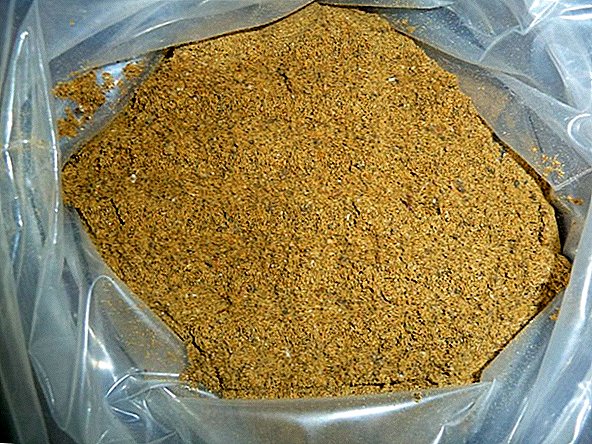
- Meat and bone meal. Another popular product. By its qualities it is similar to fish, although it is inferior in its protein content (it is 30-50% here). In the mixture with other feeds begin to add from the 5th day.
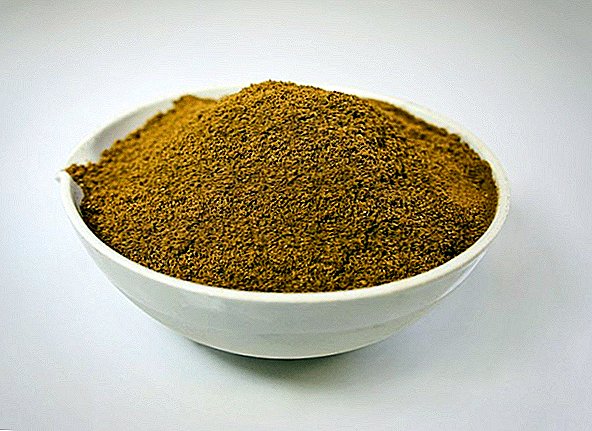
- Milk products. It is a source of calcium and protein. Already at an early age, ducklings are given low-fat cottage cheese, and as they grow, sour-milk products are added to it in small doses. Please note: try to avoid fresh milk - it can cause diarrhea in birds.
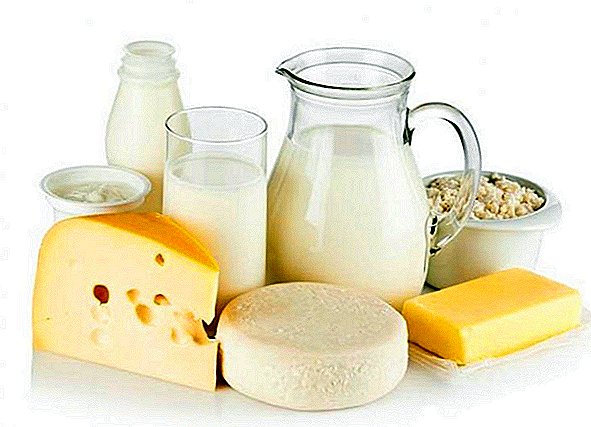
Important! Fishmeal is often made into broth, which is used as a basis for mash, eagerly eaten by ducklings.
In addition to the listed feeds, ducks adore graxu - this waste, obtained by heating cod liver, is often found in the form of flour. It can be poured in the same doses as fish meal. Rarely caught fresh Grax. It is quite fat, so they feed this product strictly from 10 days of age (maximum 5% of the dry diet).
A special delicacy for ducks is boiled lake crustaceans, which are added to the menu within 7-10% of the mass of grain feed. This raw material contains up to 60% protein and 9-10% phosphorus. Mandatory pre-cooking - so the bird is protected from worms that can parasitize on crustaceans. 
Find out the terms and conditions for growing ducklings in an incubator.
Mineral Supplements
They are necessary for normal digestion and formation of the bone apparatus. But their presence for layers is especially important - they use a huge amount of valuable elements to get a normal shell, and stocks must be regularly replenished. This helps:
- Carefully crushed (in fragments not more than 2 mm) shells, which are added to the wet mash.
- Dried and crushed eggshell or chalk. These are calcium supplements too.
- Bone flour. It is well digested and contains up to 25% calcium in its mass. 2-3% is added to the main feed.
- Gravel screening or coarse sand. These ingredients help the bird digest hard grains that have fallen into the stomach. Reception begin from an early age (duck enough 10 g per week).

Did you know? In search of food duck can dive to a depth of 6 m.
Popular and common salt. But it is given only to those ducks, in the diet of which there are no salted vegetables or mixtures. At the same time, extremely small doses are taken (0.1-0.2% of the total mass of feed).
What ducks eat: feeding characteristics by age
Having found out what feeds are used when keeping ducks, let us turn to an equally important question - their specific dosage depending on age. Let's start from the first days of the chicks. 
Little ducklings
Caring for ducklings comes down mainly to competent and timely feeding. The main thing is to correctly calculate the dosage of the necessary products.
Weekly
The menu of the smallest chick (up to 5 days) includes:
- boiled eggs - 10 g;
- wet mash - 6 g;
- greens in small pieces - 5 g.

From the 5-6th day of life, the following ingredients are added to them:
- wheat and corn flour - 6 g each;
- millet - 3 g;
- dry milk - 2 g;
- fish, meat and bone and bone meal are mixed in equal shares (should be 3-4 g).

Two weeks
Consumption rates increase significantly:
- wheat and corn flour are given equally (in the amount should be 70 g);
- low-fat cottage cheese - 20 g;
- grain mixture - 15 g;
- millet - 9 g;
- fish meal - 8 g;
- cake from sunflower - up to 6 g;
- hay and meat and bone meal - 5 g;
- yeast - 4 g;
- shells and chalk - 1 g;
- salt - 0.5 g

Important! It happens that the duckling is weak and can not eat from the trough. In such cases, use a pipette.
This is a general scheme on which to navigate. If we talk about optimal numbers, by the end of 20 days, ducklings are given 135-160 g of food (with an eye on their well-being and appetite).
Monthly
Feeding is increasing:
- the emphasis is on shredded barley - up to 90-100 g of such dertie will be needed per day;
- bran and greens are given equally (60 g);
- grain mixture - 20 g;
- fish and meat and bone meal - 10 and 7 g, respectively;
- crushed chalk and shells will need 1 g.

Two month old
This is the best time to go to the "adult" food. The diet is formed as follows:
- the basis is made by the same products, as for a monthly bird, but in slightly smaller quantities (220-230 g / day);
- the content of corn dough is increased to 70 g;
- grain mixture will need 60 grams;
- wheat derti - 25 g

Adult ducks
The diet of adult birds will be different - it all depends on the purpose of livestock.
Layers
3 weeks before egg-laying, the ducks are transferred to another feeding scheme: they reduce the supply of coarse and succulent feed, replacing it with protein-rich ones.
Did you know? Duck quacking does not echo.

At this time, practiced enhanced 4-times meals: 3 times give a wet mash, and at night - germinated grains (oats or barley).
There is one nuance. The fact is that grain ingredients in this period are best given along with the yeast:
- 20 g of this product are diluted in warm water;
- 1 l of such a mixture takes 1 kg of grain;
- having mixed these components, structure insist 8 hours;
- after the specified time the mixture is added to any feed.

The daily amount of food directly depends on the egg production for the month:
- If you look at the numbers, it turns out that the doses of barley (or corn) and hay flour remain the same - 100 and 40 g, respectively;
- almost at the same level, the use of fresh greens or boiled carrots - an average of 100 g;
- 60 g of boiled potatoes are added to ducks giving 3 or less eggs (with the best egg production only 40 g are needed).

There are in the diet and "floating" numbers. For convenience, we indicate them through the dash, according to the schemes "0-3", "12", "15", "18", "21". As you guessed, these are egg production indicators, with an eye on which the following feeds are given:
- grain mixture: 50-60-75-80-87 g;
- meal, cake: 2.4-9.4-12-13.5-16.2 g;
- crushed shells: 5.8-8.4-9.2-10-10.9 g;
- fish or meat and bone meal: 1.6-6.4-7.8-94-1.5 g;
- bone meal: 1.1-1.4-1.5-1.6-1.7 g;
- salt: 1.1-1.4-1.5-1.5-1.7 g
Important! If the future layer is not sufficiently well fed, then it goes on such a diet for another 1.5 months before the first laying.

In addition to feed, the duck will need water (about 1 l per day) - make sure that there is an open container nearby. However, try to avoid overwetted feed.
If you want your ducklings to be healthy and beautiful, consider what to feed the little ducklings.
Meat breeds
Feeding ducks for meat usually takes 2-2.5 months. That is, the growth of the masses begin to care from the first days of life.
If youngsters are raised for meat, the consumption rates will be equal to those indicated slightly higher. But in the future it is worth remembering about two main dates:
- 2 weeks before the expected slaughter, the ration includes increased doses of protein foods - peas or low-fat cottage cheese. They accelerate the growth of muscle mass;
- For 1 week, they give food of a "fatty" orientation - boiled potatoes and more mash, as much as possible, limiting the movement of poultry.

During the final fattening period, the fish meal and minced meat and fish oil are excluded from the duck menu.
How the diet changes depending on the season
The nature of feeding, as well as the amount of food and feed used, varies with the time of year. Find out how and why.
Spring
This is a transitional period: if in March - the first half of April, small rations of silage, grass meal, and sometimes steamed hay are present in the diet, then towards the middle of May such reinforcing feeds are replaced by greens that appear. 
Did you know? Ducklings really take for mother the first creature they saw after they hatched from the egg.
In order for the nutrition of the bird to be balanced at this time, they are guided by the following standards for food consumption (hereinafter referred to as grams):
- cereals (in grains or as grains) - 180;
- wheat bran - 25;
- greens - up to 100 (as they appear);
- carrots - 60;
- boiled potatoes - 40;
- cottage cheese - 15;
- seashells - 6;
- bone meal - 3;
- fish meal (or fresh minced meat) - 10;
- hay flour - 15;
- chalk - 3;
- salt - 1-1,5;
- gravel (screenings) - 2.

The number of feeds for birds in the pen - 4 times a day (2 - in the form of wet food with greens, and another 2 - grain mixtures and feed).
Summer
For birds, this is the peak of gastronomic diversity: in the midst of the season of greenery and grazing, and if there is access to the pond, it is generally wonderful. But in any case, it is not necessary to transfer the ducks to self-sufficiency - in the feeder must be:
- cereals (in grains or as grains) - 190 g;
- wheat bran - 25;
- greens - 120;
- cottage cheese - 15;
- shells - 5;
- bone meal - 2;
- fish meal (or fresh minced meat) - 15;
- chalk - 3;
- salt - 1.5;
- gravel (screenings) - 1.

The abundance of greens allows you to temporarily remove from the diet boiled vegetables and supplement in the form of hay flour - an armful of fresh grass will more than override the need for the right elements.
Autumn
If in September you can still hold out on stocks of greenery, then, as the temperature drops, they switch to enhanced feeding - the remains of silage, boiled and chopped beets, grain mixtures with mineral additives.
Important! Portions are laid in the feeders with a small margin: if you place too much of a supplement, the feed may sour or ferment, which is fraught with infections.

The standard daily calculation of consumption takes the following form:
- cereals (in grains or as grains) - 170 g;
- wheat bran - 35;
- greens - 150;
- beets - 70;
- cottage cheese - 8;
- seashells - 6;
- bone meal - 1,5;
- fish meal (or fresh minced meat) - 8;
- hay flour - 5;
- chalk - 3;
- salt - 1.5;
- gravel (screenings) - 1.

In general, ducks tolerate autumn days, but in winter they need special care.
It will be interesting to learn how to raise ducklings in an incubator and how to pluck a duck without hemp.
Winter
The list of ingredients (with the exception of the greenness missing by that time) remains the same, but other figures appear in it:
- cereals (in grains or as grains) - 180 g;
- wheat bran - 40;
- carrot - 80;
- boiled potatoes - 60;
- beets - 30;
- cottage cheese - 10;
- seashells - 6;
- bone meal - 3;
- fish meal (or fresh minced meat) - 1;
- hay flour - 18;
- chalk - 3;
- salt - 1.5;
- gravel (screenings) - 2.

The increase in the share of some feed occurs for a good reason. If in the warm season the supply of nutrients is spent on growth and activity, then by winter another “item of expenditure” appears - the warming of the birds.
What not to give ducks: harmful products
Ducks, which many consider almost omnivorous, are in fact quite sensitive to food and food being eaten. In the case of them, there is also a list of forbidden delicacies, which should not get into the trough.
Did you know? Ducks calmly walk in the snow because of the special structure of their paws: they have neither nerves nor vessels.

Among those:
- food and bread products with traces of mold (it causes aspergillosis);
- fine flour - as an ingredient of the mash, it absorbs moisture and is taken by the pellets, which can clog the nasal openings;
- fresh milk and milk cereals (due to rapid acidification and the risk of diarrhea);
- maple leaves - for ducks this is the strongest poison;
- untreated nettle (hairs cause irritation of the stomach walls);
- any parts of poisonous plants - celandine, henbane, cocklebur and others.

The absence of such feeds, coupled with a competent diet, guarantees a rapid increase in livestock and poultry health at any age.
Now you know what raw materials and products are used for growing ducks, and in what quantities they are fed. We hope this information will be useful to those who are thinking of starting such a flock in their compound, and funny fluffy lumps will quickly turn into powerful and heavy birds. Good luck in this business and more positive every day!
Video: how to feed ducks and how to make feed for ducks
Feedback from users on how to feed the ducks



On the first day, the ducklings are fed with chopped boiled "chicken" or duck eggs. In the next two days, you can add a little low-fat cottage cheese and a small amount of corn or barley cereal to the eggs. From the 4th day fresh greens are found in the diet. Next, you can enter the boiled potatoes. According to its properties, it is interchangeable with dry concentrated feed, instead of 1 g of concentrates, 3 g of potatoes can be given. Be sure to add vitamin and mineral components. All feeds are given in the form of loose wet mashes. If possible, it is better to cook such food with skimmed milk, skim milk, broth. When distributing mash, it is necessary to ensure that all food is eaten in no more than 45 minutes. If the bird does not have time to eat - the amount of feed should be reduced. Storing wet mash is not allowed, as it is a perishable product and may cause poultry disease.

















